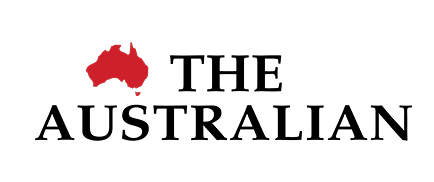The federal government has had more than three months to come to terms with the High Court’s short, unanimous ruling in the migration case known as NZYQ. Its failure to do so cannot be blamed on the judges.
The High Court did what it was required to do under the Constitution: it policed the separation of powers and made it clear the judiciary – not government – is the only institution permitted to punish law-breakers.
Governments can legitimately detain unlawful immigrants pending deportation. But if there is no real prospect of deportation in the reasonably foreseeable future, then this form of detention loses its administrative character and becomes punitive.
And that takes it outside the government’s remit and into judicial territory.
That is how the separation of powers works. Parliament makes the law and the judiciary applies the law, imposing punishments after considering the law enacted by parliament and evidence assembled by government agencies.
This is fundamental to democracy and helps prevent abuse of power.
After NZYQ, a wise government might have moved quickly to seek greater clarity about the exact location of the boundary that separates punitive action from other executive acts that might look like a form of punishment.
That would mean ensuring legal challenges to those executive actions proceed to judgment as soon as possible.
If the government wins in court, fine. If not, it would have the benefit of knowing exactly where it had breached the separation of powers. It could then make policy adjustments from a sound basis.
Instead, the government has done the reverse.
It has paid legal costs and surrendered to several former detainees to prevent legal challenges reaching the High Court. This has also prevented the government from obtaining what it so desperately needs: certainty about what it can do with unlawful immigrants.
By preventing the court from ruling on those challenges, the government has made things much worse.
It has sacrificed the long-term benefits of legal certainty in order to avoid the risk of political embarrassment from any defeats.
The result looks a lot like arbitrary rule: Some former detainees who had been released into the community wearing ankle bracelets have been relieved of that obligation in order to prevent the court from hearing their challenges.
Either there was a lawful basis for ordering these people to wear ankle bracelets in the first place or there was not. If the government believes its own law is so vulnerable it cannot be defended, why has it not been amended?
This leaves the impression that those running things in the migration portfolio have not yet taken on board the principle from NZYQ.
A wise government might also have sought to bolster the immigration detention system by giving the judiciary – and not a committee of bureaucrats – a central role when it comes to ordering anything that looks even remotely punitive.
Ankle bracelets and curfews might or might not be considered punitive. So why not just eliminate the legal risk by requiring judicial sign-off whenever migration officials consider these measures are necessary?
At the moment, the law imposing ankle bracelets and curfews on released detainees seems particularly vulnerable because the government went too far, influenced more by politics than the parameters laid down in NZYQ.
Instead of imposing these measures only on those detainees who are proven to be dangers to the community, the government accepted the opposition’s demands and imposed these requirements on all detainees unless individuals are not considered to be dangerous.
There is certainly a case for protecting the community from dangerous criminals. But this measure has been enacted in a way that means the High Court might well strike it down as punitive.
If ankle bracelets and curfews are truly protective and not punitive, the court might well ask why the new law was not extended to Australian criminals who have served their sentences, instead of limiting it to foreign criminals who are here unlawfully.
The vulnerability of this measure has been highlighted by constitutional lawyer Anne Twomey on her YouTube channel, Constitutional Clarion.
Because ankle bracelets and curfews are the default position she believes this suggests the purpose is indeed punitive rather than a protective measure based on risk.
“And as we all know, a punitive purpose leads to constitutional invalidity,” Twomey told her YouTube audience.
This might explain why the government has not been prepared to defend its own law in the High Court.
But it’s not the only problem with the government’s response to NZYQ.
Not one application has been made under the preventative detention regime that seeks to incarcerate unlawful immigrants, sometimes for years, if a court considers them to be not just a risk to community safety but an unacceptable risk.
Defence lawyers would have a field day distinguishing between a mere risk and an unacceptable risk.
And even if the government clears that hurdle, it would then need to show that the risk to community safety cannot be eased by a less restrictive means.
The lesson from NZYQ is that the High Court – not the government – has the final say on whether action by the executive branch of government is punitive.
Instead of dealing with that reality and working within the NZYQ parameters, the government has briefed against the High Court to members of the Canberra press gallery, has succumbed to political pressure when it should have relied on the requirements of the law, has paid money to prevent dubious conduct being tested in court and enacted one measure that is so cumbersome it has not been used.



